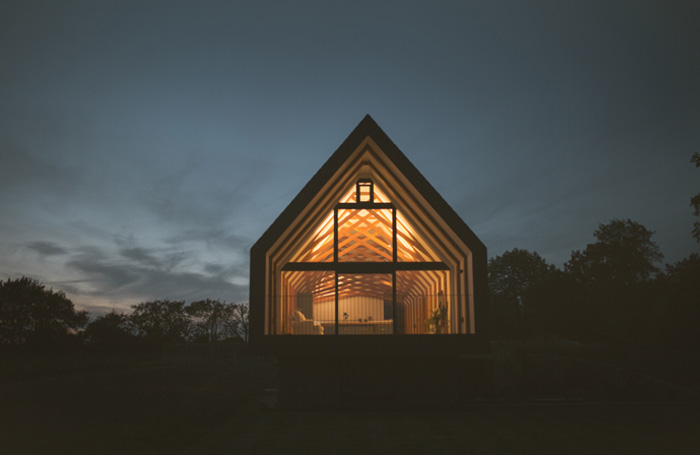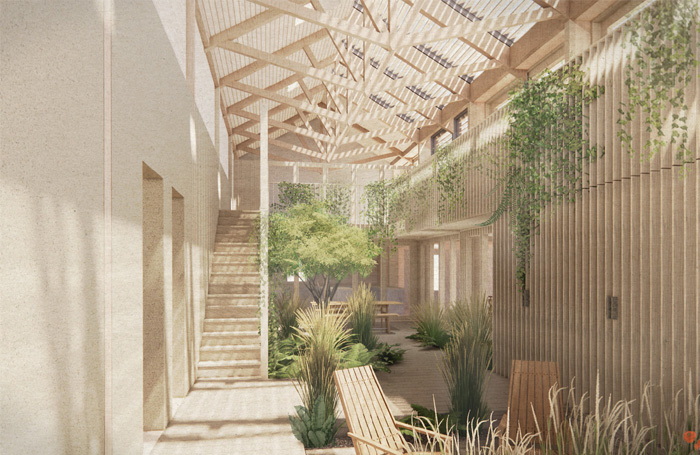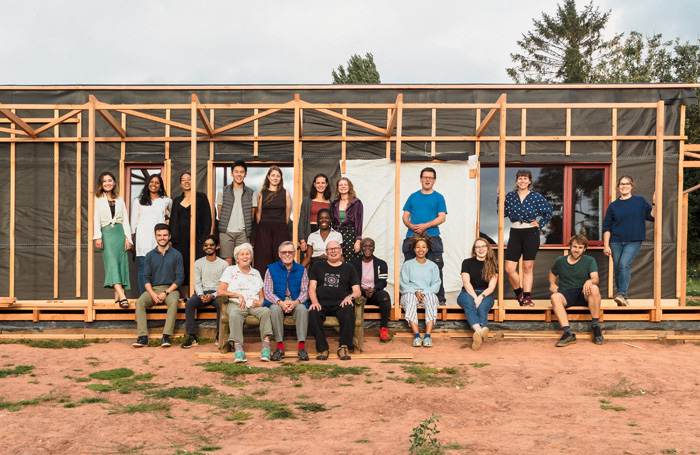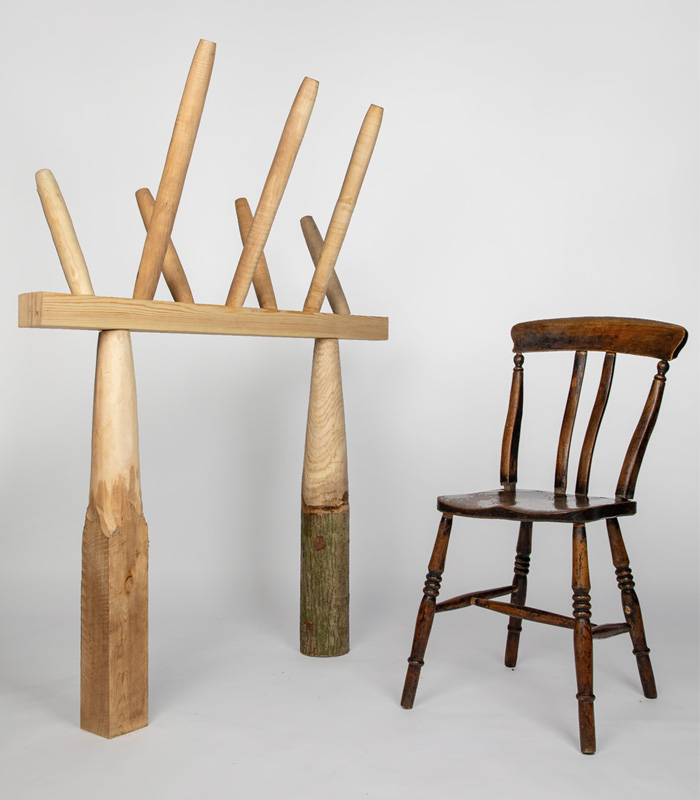This month, RIBA London spoke to Studio Bark, an architectural and design studio renowned for its commitment to rigorous environmental design and creating structures that seamlessly integrate with the natural environment.
In 2021, they launched 'No Building As Usual' (NBAU), a pioneering student build programme addressing industry the gaps in diversity and climate literacy. Nest House, an accessible home in Herefordshire stands as a testament to this initiative crafted collaboratively by 12 students over 10 weeks.
Studio Bark is also the creator of U-Build, a flat-pack construction system that embodies the dedication to innovative sustainable construction methods.
The work is guided by a profound compassion towards the people, the planet and each other. It's not just about constructing buildings; it's about weaving a narrative of conscientious architecture that shapes a more sustainable and inclusive future.

What do you think is the most important issue for architects to focus on right now, and what is Studio Bark doing to tackle it?
For us, it has to be designing for the climate and ecological crisis. Studio Bark believes that the built environment needs to be Whole Life Zero Carbon (WLZC).
Whilst the whole profession needs to commit to WLZC design, we also believe that widespread climate literacy is paramount. This includes architectural education and working with clients.
If the profession is to meet the RIBA’s 2030 Challenge, then students already need to be learning how to design to net zero. This is a crucial part of why we established our No Building As Usual (NBAU) programme.
Continuing professional development of architects is also really key, as technologies and principles change quickly.
What resources can practices look to if they are in the process of becoming more sustainable?
A genuine interest and commitment to embedding designing for the climate emergency through all stages is critical - we need to ensure everyone is moving beyond a pure checklist approach.
Great strides have been made towards the reduction of operational carbon within buildings, and as such, working to minimise our embodied carbon has grown in importance.
Clear guidelines such as the RIBA 2030 Climate Challenge and the LETI Climate Emergency Design Guide can provide great objectives. The Architect’s Climate Action Network (ACAN) also has a wealth of online resources on operational and embodied energy, as well as working with natural materials.
We would be interested in seeing the same overhaul to building regulations applied to WLZC, with a focus on CPD and incorporation at all stages in the design process.
An eagerness to understand the processes is key, and we’ve done a lot of whole team upskilling in the principles and specifics of net zero design.
Having put in this hard work, we can undertake retrofit appraisals, life cycle analysis, and energy modelling in-house, ensuring WLZC design is seamless with all aspects of the design process.

You speak about tackling lots of specialist services in-house. Can you tell us a bit more about that?
We have so many varied and diverse strengths within the Studio Bark team and work very collaboratively on all of our projects. Whilst recognising the value that others bring to the design team, and by being able to undertake certain specialist services in-house, we can ensure our work is entirely holistic and believe our output to be much richer as a result.
This is particularly important in our Paragraph 80 work. Paragraph 80 refers to the isolation clause of the National Planning Policy that permits “outstanding” countryside homes.
Our long standing in-depth research on this policy, and our newer research work on Paragraph 134, means we have a richer, more multifaceted and strategic approach to design.

You sound busy - What other projects are you working on?
In addition to our residential work, of late we have been enjoying working on a number of interdisciplinary projects. One such project is Making a Stand, which is a co-created artwork between Studio Bark and acclaimed visual artist Michael Pinsky.
Our approach critiques waste in the art installation world, featuring 127 seven-meter tall timber fins designed for reuse, complete with material passports to trace their sustainable journey.
We’re also looking forward to embarking on a new NBAU project in 2024. Finding an appropriate project for this sort of programme is always a tricky but exciting process, and we’re looking to make new partnerships should anyone reading this be interested.
As the most sustainable building is the one that already exists, we’re also working on a number of retrofit projects, and we enjoy the challenges of working with existing buildings.
This includes a long term plan for our own studio in a converted mill building in Stroud. Working on our own projects always provides an exciting test bed for innovative technologies and materials.

What would be Studio Bark’s ideal client?
We had a fantastic workshop with Juliet Mitchell of Architypal earlier this year, where we discussed this question in detail. Usually, when we’re working with domestic clients, it may be the first time people have worked with an architect, and we want it to be an exciting and collaborative process.
We don't expect our clients to be sustainability experts, but we value their interest and willingness to embark on the sustainability journey with us. We've found that the best client relationships are built on this shared commitment.
Our residential work in particular gives us a fantastic opportunity to work with clients on innovation and development of materials and technologies.
Looking forward, we’re hoping to continue expanding our expertise in traditional building techniques and passive energy principles. With the aim to look at them through a modern lens that enriches a project, context and the life of its inhabitants.
Last but not least, what benefits have you gained from being a RIBA Chartered Practice?
Our journey with RIBA has been transformative in launching the 'No Building As Usual' programme. Their endorsement, particularly from Dian Small of RIBA London was invaluable to the success of the programme.
We have found the availability of the RIBA Business helpline very helpful when looking at contract nuances.
As mentioned above, the RIBA 2030 Climate Challenge has helped steer us when designing to strict requirements for net zero. Also, the RIBA Business Benchmarking report has helped us understand how we sit within the profession on different issues.
To find out more about Studio Bark, visit the Studio Bark Website or connect with them on Instagram or LinkedIn.










